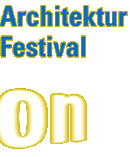

 |
| Mini Residential Settlement Gračani |

 |
 |
|
 |
|
Berger + Parkkinen Architekten Boltshauser | Rauch Pichler & Traupmann königlarch architekten HOLODECK architects Feyferlik | Fritzer Peter Jungmann Hohensinn Architektur henke und schreieck Architekten sam | ott-reinisch Hans Gangoly Delugan Meissl Assoc. Architects cukrowicz nachbaur columbosnext "Turn On Partner" |
An extraordinary demand for building plots in the outskirts of Zagreb, combined with the lack of taste and residential culture or relevant milestones of housing legacy, resulted in the 1990’s in an unprecedented hunger for square meters, accompanied by the reckless pollution of domestic environment. This became even more obvious on the steep terrains, fully revealing the speculative forces in their utmost radiance. Thus we proposed:
Residential Settlement Rural Mat Another attempt to interpret the urban rules in order to avoid the "urban villa" syndrome. In a peaceful scenery of the former village of Markusevec which grew over the years to become a part of the city, the Russian client asked for a middle-class residential settlement. The general urban layout respects the rooted paths leading to the center of the village. The housing units are accumulated along these lines. A public playground is set as the terminal point on the other end of the route. Taking the rural scale as a point of departure, the typology of semi-detached houses has been recombined into a series of compact rural mats – flat, introverted, and dense. Lots are not regular but tailored to meet the area of 600 m² minimum. The setbacks of the second floor are generated by the rule for the maximum attic area that limits the surface to the 75% of the typical floor. By avoiding to have such a typical floor, an arithmetical average of the two lower floors could be taken. By the virtue of this manipulation a bigger amount of square meters could be achieved. Subsequently, the setbacks differ from house to house and directly reflect the mathematics, rather than design. Carports, patios, terraces and dwellings are all contained within the clearly outlined limits. An effort to maintain the qualities of individual housing in the group – more congested and less land-consuming. H.N. Hrvoje Njiric, born 1960 in Zagreb, Croatia. Graduated from the Faculty of Architecture in Zagreb in 1986. Visiting critic at the HAB Weimar, the ETSAB Barcelona, the TU Wien, the AA School of Architecture London, the ETH Zuerich, the Strathclyde University of Glasgow, the Politecnico di Milano and the Southeast University of Nanjing, the ETSAM Madrid and the William Lyon Somerville Visiting Lectureship at the University of Calgary. Guest professor in Graz (1998), Ljubljana (1999), Ferrara (2000), Aarhus (2005) and Trieste (2006). Professor at the TU Graz (2000–2005), the GAF Split (since 2007) and the ETSAM Madrid (since 2008). Principal of njiric+ arhitekti d.o.o. in Zagreb. Major built works (selection): Baumax Hypermarket (with Helena Njiric) in Maribor (1999), McDonald’s Drive-In (with Helena Njiric) in Maribor (2000), Hypo Alpe Adria Bank in Sisak (2003), Kindergarten MB in Zagreb (2005), Gračani Housing in Zagreb (2007), Kindergarten Sunce in Zagreb (2007), Rural Mat in Zagreb (2008). Awards (selection): Zagreb Salon – GRAND PRIX (2003, 2006), Drago Galic – UHA AWARD for the best Croatian residential building in 2006 (2007), Piranesi AWARD (2007). Weiterführende Links: www.njiric.com Projektliste in der nextroom architektur datenbank |
|||||||||||||||
|
||||||||||||||||